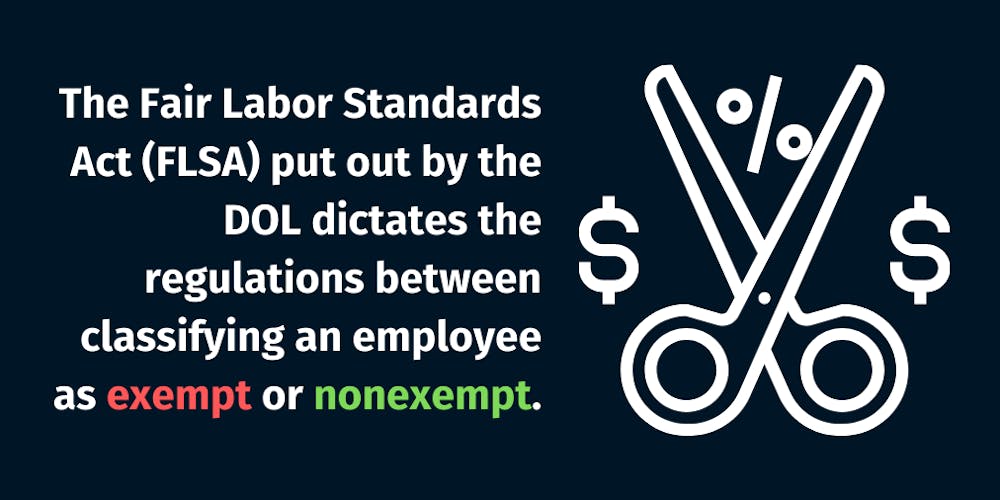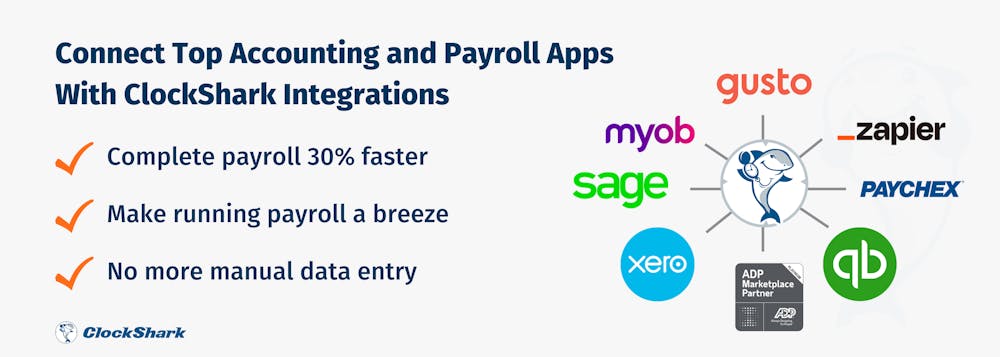In 2021, the IRS assessed around $11.2 million in penalties for non-compliance with the employment tax code, associated with payroll taxes. Your payroll managing process has direct effects on every part of a company — from its financial health to its reputation and employee satisfaction.
What Does It Mean to Manage Payroll?
Payroll management is more than performing your payroll process. Managing payroll is the process of tracking each employee’s work hours, pay, etc., and recording the data for tax reasons.
It involves staying up-to-date on state and federal wage laws and keeping meticulous records of all payroll-related information for a minimum of seven years. Payroll management is usually a repetitive process that is done weekly, biweekly, semi-monthly, or monthly.
How to Manage Payroll Effectively?
For companies that manage teams of contractors and remote workers, a smooth payroll process is even more important. Workers in the field are rushing to meet deadlines. No matter the size of the company, payroll hiccups are costly and disruptive.
Read on to learn the 8 ways to improve your payroll process.
1. Evaluate Your Organization
Do you use a payroll calendar? If the answer is no, you’re missing out on a simple and effective way to improve your payroll processing and payroll managing.
A calendar helps employees and payroll staff be in sync. Employees have peace of mind knowing that you’re issuing their paychecks on a regular schedule. Managers have firm deadlines for approving timecards. And HR staff can say goodbye to the days of using sticky notes to remind them about every important date and deadline.
How to do it:
When you create your calendar, include pay dates for the entire fiscal year. Some states require companies to pay their employees on a monthly basis, while others must pay on a weekly or bi-weekly schedule. Double-check that you’re in compliance with your state’s payday requirements.
Use your calendar to outsource the burden of remembering every tax date and deadline. Set up notifications to alert you before important deadlines. Note the due dates for payroll taxes, sending out 1099s, etc.
Consider making a downloadable version of the calendar available on your company’s website, like these from the US Department of the Interior. With this, employees will know exactly when to expect their paychecks. Payroll staff doesn’t have to worry about sending out an email every time a weekend or holiday interferes with a pay date. Instead, employees can reference their calendars.
2. Double-Check Your Employee Classifications
In 2020, more employees are working from home than ever before. This has the potential to tangle up employee classifications, according to Jim Pendergast, Senior VP of altLine Sobanco.
“Given today’s patchwork of work arrangements,” Jim says, “everything from the duties being performed to someone’s work hours could change their exemption status. Not to mention there are differences in exemption labor laws from state to state, making this even more difficult if you manage a geographically distributed team.”
HR professionals need to pay close attention to the differences between their exempt and nonexempt employees when managing payroll.
How to do it:
Have your employees recently gone through a salary fluctuation? Has there been changes to their work hours or responsibilities? Jim advises administrators to pay close attention to work-related changes that may alter an employee’s exemption status.
The Fair Labor Standards Act (FLSA) put out by the DOL dictates the regulations between classifying an employee as exempt or nonexempt. If you have questions about the exemption status of your employees, consider consulting an employment lawyer. You should also look through the resources on the DOL’s website, and don’t forget to check the state(s) website where your employees are located.

3. Update Software and Systems
It’s easy to justify sticking with a payroll system because “that’s the way we’ve always done it”. And it’s true that holding on to a paper-based system or an old form of software may save your company a few bucks right now. But it will have real, costly implications down the road.
Not updating your payroll software means that you miss out on changes to employment rules. Your company is more likely to fall out of compliance with new laws issued by the IRS and updated DOL regulations.
For companies that rely on paper systems, there’s an ever-present risk of misplacing, losing, or mixing up important paperwork. Paper payroll systems are also more costly than you might imagine. You have to factor in the cost of printing, paper, files, and the administration costs of managing the systems.
By the time you account for all these costs, it’s generally more cost- and time-efficient to switch to a modern, reliable form of technology for payroll managing.
How to do it:
Check your software to see if it is outdated. Has your company grown from 100 to 300 employees in the last year? You might be at risk of outgrowing your current software. Re-evaluate what’s working and not working about your present payroll systems.
Use your analysis to research up-to-date payroll software. Look for solutions that integrate with timekeeping, payroll, and accounting software for more robust payroll automation.
4. Analyze Your Process
When was the last time you took a close look at your own payroll processing? An internal payroll audit will help you catch mistakes and inaccuracies, such as wrong classifications, in your existing systems. It provides a double-check for the accuracy of your payroll information, telling you if you’re prepared for a real audit.
Analyzing your own process also allows you to spot slow-downs in your processes. It will uncover inefficiency and show you where you have redundancies.
How to do it:
Start by creating a regular schedule for auditing your own business. While there’s no hard-and-fast rules in this area, most payroll management professionals recommend carrying out an internal audit about 1-2 times per year.
If you’re a general with budget constraints, you may be better off to do an annual audit. Larger businesses may benefit from semi-annual audits. Whatever you choose, it’s important to create a regular schedule and stick to it.
Next, it’s time to choose your method for conducting the payroll audit. You can DIY it — either do it on your own or have a staff member carry out the audit. Or, you can bring in a third party, such as a CPA.
Usually, the decision between DIY-ing it or hiring a CPA comes down to whether it’s more practical for your company to save on costs or time.
5. Stay on Top of the Latest Employment Laws
You may be maintaining perfect compliance with employment and tax regulations. But if you’re still referencing laws from 2018, there’s a good chance that you are working inefficiently.
We live in a world where falling out of compliance causes serious issues to a company — both legally and in terms of reputation. It’s important to stay up-to-date on changes that are made to employment laws at a federal, state, and local level.
How to do it:
The bad news? There’s not one single resource that will update you on all new employment laws. The good news? With some time and practice, you’ll learn to pay attention to the channels that affect your company directly.
Create a separate email address to stay up-to-date from professional sources. Sign up for email alerts from the DOL, as well as your state and county websites. If your employees work across state lines, get on an email list for those states and counties, as well.
Use your email address to subscribe to updates from the Society for Human Resource Management (SHRM). SHRM is the largest network of HR professionals. They have their finger on the pulse of workplace changes and regulations. HR Hero is another great resource for staying up-to-date on the latest HR news.
Develop a relationship with an employment law attorney. A good attorney will help you navigate the nuances of employment law (because yes, it’s complicated!). The more your attorney knows about your company, the more tailored their suggestions will be. They will have a firm grasp of what new laws will affect your company, and they’ll keep you top of mind when new regulations roll out.
6. Have a Backup
Losing payroll data creates all kinds of hassles for a company. It causes delays in issuing paychecks to employees. Not to mention that losing sensitive data can create a tangled web of legal liabilities.
It’s also important to have a personnel backup. This is especially crucial for small companies where one person has the majority of payroll responsibilities. Sickness happens. But you don’t want paychecks to be delayed because your chief HR person came down with the flu.
How to do it:
Back up your payroll data on a regular basis. Keep a backup offsite in case of a natural disaster, virus, or robbery. You should also make sure to protect your backups with encryption and passwords. Avoid backing up to USB drives or laptop hard drives, because these devices are typically not encrypted, and they can be easy to steal.
Cross-train your staff so that there’s always someone who can take care of payroll. A cloud-based technology will automatically keep an encrypted copy of your data so it is always accessible.
7. Integrate Timesheets More Efficiently
When employees are spread out across a number of locations, paper timesheets become a huge source of stress and confusion. There’s the time it takes to coordinate delivering the timesheets from the worksite to the HR department. There’s the inevitability that some time cards will get lost, damaged, or misplaced. And, there’s the risk of someone misreading a time entry or transcribing the wrong number.
Any of these mix-ups will result in an overpayment or underpayment. Both these problems create costly issues for the company and lead to less employee satisfaction.
How to do it:
Find a technological solution that will upload employee timesheets straight to your payroll software. This will eliminate a lot of the wasted time and hassle that you spend double-checking paper timesheets and tracking down missing hours.
8. Create Better Scheduling Practices
For companies that employ office workers, coordinating the schedules of different workers is not too difficult. But when employees are spread across job sites (construction workers, electricians, home health care workers, etc) scheduling becomes more complicated.
Relying on paper schedules creates a mess when one worker calls in sick. HR wastes a lot of time calling and texting employees, trying to get someone to cover an open shift. Last-minute changes lead to confusion, especially if a worker forgets to clock in or out for their shift
How to do it:
Invest in an employee scheduling apps. Integrating your scheduling, time tracking, and payroll functions will allow you to automate your scheduling process. You will be able to catch at a glance when the work actually performed doesn’t match the schedule.
How Can I Improve My Payroll Skills?
If you’re an HR professional looking to improve your personal skills, consider investing in payroll training. Training will help you identify areas of inefficiency in your company’s payroll processing. It will give you a better idea of the big picture surrounding payroll. If your company uses a particular software, take some time to refresh yourself on the capabilities of that software.
According to Jim Pendergast, one major skill that stands out among HR professionals is the ability to manage an in-house payroll audit with the skill and diligence of a third party.
“Explore certified payroll administrator certificates and courses,” Jim recommends to HR professionals looking to add to their repertoire of skills. “Pay special attention to applying that knowledge to standardized in-house payroll audits that review the entire payroll workflow, manual and automated, to make regular improvements.”
How Can I Find the Right Payroll Software for My Company?
Start by researching the rules for payroll software in your state. Jim recommends referring to the American Payroll Association to make sure that your software will support compliant payroll operations. Jim also recommends surveying employees in the company, including HR and key accounting staff.
“Get their insights on what they’d prioritize in their ideal payroll software,” he says. “Management already has a sense of the logistical needs software should fill, things like the number of employees it has to account for, benefits enrollment layers, and business reporting functions. What they might not understand are the additional features the team wants as well, such as interface usability, a desire for mobile access, and so on. Don't leave your team in the dark here.”
Save Time and Money with ClockShark
Manage Payroll with Ease
A smooth payroll process is a lot like a working car engine. It hums along in the background, going mostly unnoticed. But when it stops working, the car comes to a halt.
Those of us who work in payroll know that managing payroll is anything but simple. There are many challenges — from outdated software to complicated scheduling practices to inefficient systems. All these threaten the effectiveness of the process. And for companies that manage teams of contractors and remote workers, the stakes are even higher.









